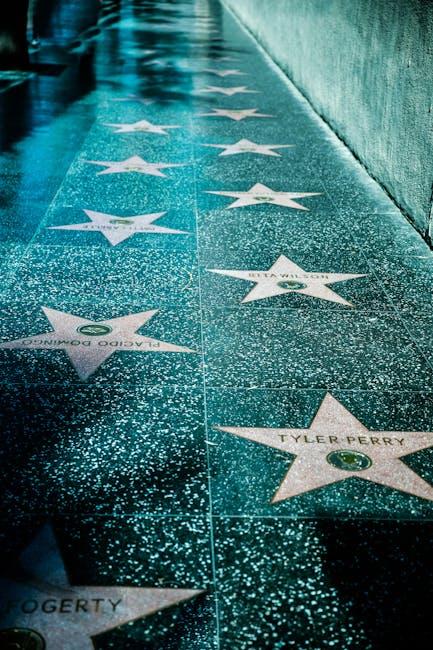In the ever-evolving tapestry of cinematic history, certain films stand as monumental pillars, casting long shadows that have shaped the very essence of the medium. These masterpieces, transcending time and genre, have not only captivated audiences but have also redefined the boundaries of storytelling, technology, and artistic expression. As we embark on a journey through the annals of film history, we invite you to explore the must-watch films that have sculpted the future of cinema. From groundbreaking visual effects that pushed the limits of imagination to narratives that challenged societal norms and perceptions, these films have left indelible marks on the industry and continue to inspire filmmakers and audiences alike. Join us as we delve into the stories behind these cinematic giants, examining their influence and enduring legacy in the world of film.
Pioneering Storytelling Techniques and Their Lasting Impact

Throughout cinematic history, certain films have stood as milestones, forever altering the landscape of storytelling through groundbreaking techniques. These films not only entertained but also challenged audiences and filmmakers alike, setting new standards and pushing the boundaries of what cinema could achieve. Here are some of the pioneering storytelling techniques that left an indelible mark on the art of filmmaking:
- Non-linear Narratives: Movies like Pulp Fiction and Memento defied traditional storytelling by presenting events out of chronological order, inviting audiences to piece together the story like a puzzle.
- Breaking the Fourth Wall: Films such as Ferris Bueller’s Day Off and Annie Hall brought a fresh perspective by directly addressing the audience, creating a unique connection between the characters and viewers.
- Innovative Use of Technology: The seamless integration of CGI in Jurassic Park and the motion capture techniques in Avatar revolutionized visual storytelling, expanding the possibilities of cinematic imagination.
- Documentary Style Filmmaking: Movies like The Blair Witch Project and Cloverfield utilized handheld cameras and found footage techniques, creating a sense of realism and immediacy that redefined the horror and thriller genres.
These films, through their inventive approaches, have not only shaped the future of cinema but have also inspired countless filmmakers to explore new dimensions of storytelling, ensuring that the art of film remains ever-evolving and captivating.
Iconic Cinematic Innovations That Redefined Visual Language
The evolution of cinema is punctuated by groundbreaking innovations that have forever altered the visual storytelling landscape. From the pioneering use of Technicolor in “The Wizard of Oz” to the revolutionary motion-capture technology in “Avatar,” filmmakers have consistently pushed the boundaries of what’s possible. These innovations are not merely technical feats; they are transformative elements that have redefined how audiences engage with film. Alfred Hitchcock’s strategic use of the long take in “Rope” and the chillingly immersive perspective in “Psycho” exemplify how technical mastery can enhance narrative tension and emotional impact.
- Technicolor: Transported audiences to vibrant new worlds, as seen in classics like “The Wizard of Oz.”
- Motion-Capture: Enabled unprecedented realism in characters, with “Avatar” leading the charge.
- Long Takes: Alfred Hitchcock’s “Rope” demonstrated the power of sustained tension.
- Perspective Shots: Films like “Psycho” showed how perspective can heighten suspense and connection.
Each of these innovations represents a bold step forward, challenging the status quo and expanding the possibilities of cinematic expression. They serve as both inspiration and foundation for contemporary filmmakers who continue to explore new frontiers in visual storytelling.
Timeless Performances and Characters That Captivated Generations

In the vast tapestry of cinema history, certain films stand out for their unforgettable performances and characters that have left an indelible mark on audiences worldwide. These masterpieces not only entertained but also redefined storytelling and character development in ways that continue to influence filmmakers today. Let’s delve into some of these cinematic gems that have become cultural touchstones:
- The Godfather (1972): Marlon Brando’s portrayal of Don Vito Corleone set a new standard for acting, encapsulating power and vulnerability in a single character. This epic saga of crime and family remains a benchmark for narrative complexity and character depth.
- Star Wars: A New Hope (1977): Introducing audiences to a galaxy far, far away, this film not only revolutionized special effects but also introduced iconic characters like Luke Skywalker and Darth Vader, whose stories have become a modern mythos.
- Forrest Gump (1994): Tom Hanks’ portrayal of the titular character is a heartfelt journey through pivotal moments in American history, offering a unique perspective on love, loss, and destiny. Its blend of humor and drama continues to resonate with audiences of all ages.
These films are not just products of their time but are timeless treasures that continue to inspire and captivate new generations. They remind us of the power of cinema to transcend boundaries and touch the human spirit in profound ways.
Essential Viewing: Films That Revolutionized Genre Conventions

In the vast tapestry of cinematic history, certain films stand as beacons of innovation, forever altering the landscape of their respective genres. These masterpieces not only challenged existing norms but also paved the way for new storytelling techniques and visual aesthetics. Here are some groundbreaking films that every cinephile should explore:
- “Citizen Kane” (1941): Often hailed as the greatest film ever made, Orson Welles’ magnum opus revolutionized narrative structure with its non-linear storytelling and innovative use of deep focus cinematography.
- “Psycho” (1960): Alfred Hitchcock’s thriller redefined the horror genre, introducing audiences to a new level of psychological terror and forever changing the portrayal of violence and suspense on screen.
- “Star Wars: A New Hope” (1977): George Lucas’ epic space opera not only launched a legendary franchise but also transformed the sci-fi genre with its groundbreaking special effects and mythic storytelling.
- “Pulp Fiction” (1994): Quentin Tarantino’s cult classic reshaped the crime genre, intertwining multiple narratives with sharp dialogue and a non-linear timeline that inspired countless filmmakers.
These films, among others, are essential viewing for anyone seeking to understand the evolution of cinema. Each one stands as a testament to the power of creativity and the enduring impact of visionary filmmakers.



